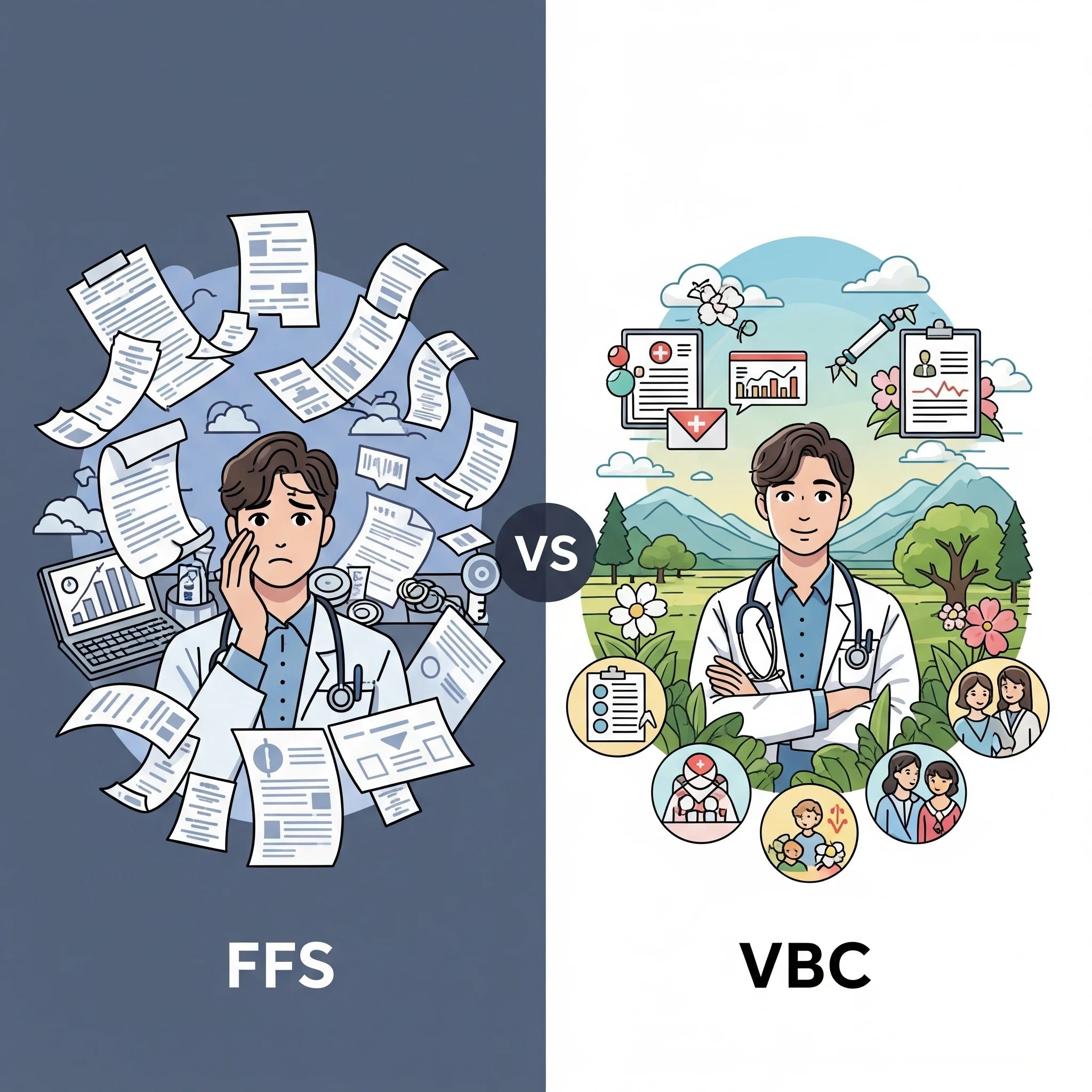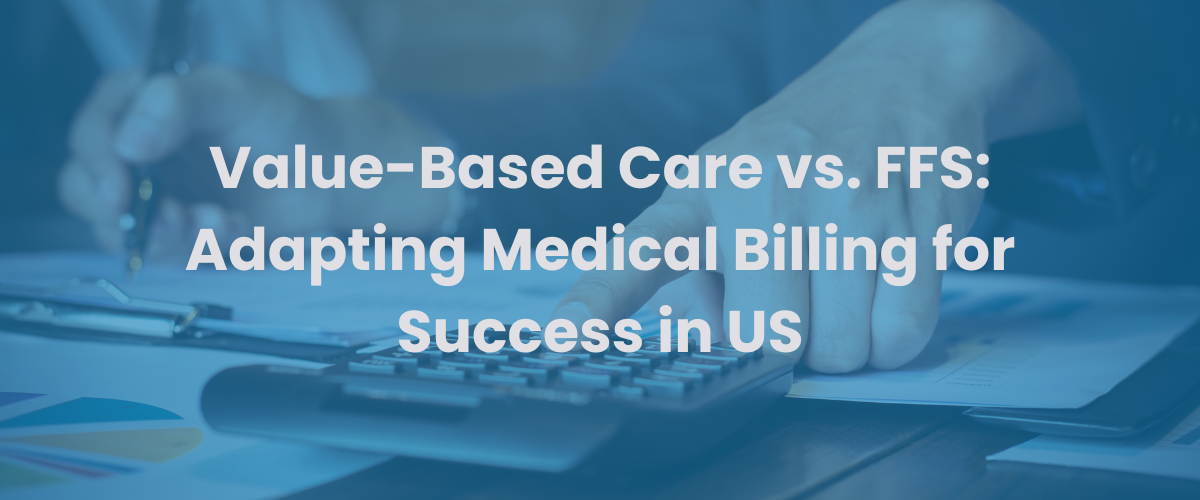The landscape of US healthcare payments is undergoing a profound and necessary evolution. For decades, the dominant model has been Fee-for-Service (FFS), a system that essentially pays providers for each individual service rendered – a visit, a test, a procedure. While familiar, this model has faced increasing criticism for incentivizing volume over value, potentially leading to unnecessary treatments and contributing to the nation’s soaring healthcare costs.
Enter Value-Based Care (VBC). This emerging paradigm fundamentally shifts the focus from quantity to quality and outcomes. In a VBC model, US medical providers are reimbursed based on the effectiveness of the care they deliver, how well they manage patient populations, and how they contribute to overall cost savings. Adapting your medical billing strategies for success in this evolving environment isn’t just a trend; it’s a strategic imperative for the future of your practice.
The Traditional Realm: Fee-for-Service (FFS) Medical Billing
FFS has been the bedrock of US medical billing for generations. Its simplicity lies in its directness: provide a service, bill for that service, get paid.
- Advantages (and why it persisted):
1. Simplicity: Billing and coding processes are relatively straightforward, focusing on individual CPT/HCPCS codes for each service.
2. Predictable Revenue: Providers know they’ll be paid for every service, offering a sense of immediate financial predictability.
3. Provider Autonomy: Physicians have significant discretion in determining the services provided. - Disadvantages (and why the shift is happening):
1. Incentive for Volume: The more services provided, the more revenue generated, potentially leading to over-utilization of tests and procedures, even if not strictly necessary.
2. Fragmented Care: FFS often discourages care coordination among different providers, as there’s no direct financial incentive to collaborate for holistic patient well-being.
3. Focus on Illness, Not Wellness: The model primarily rewards treating sickness rather than preventing it or managing chronic conditions proactively.
4. Rising Costs: Critics argue FFS contributes significantly to spiraling US healthcare costs without necessarily improving health outcomes.
The Horizon: Value-Based Care (VBC) and its Impact on Medical Billing
Value-Based Care is a commitment to delivering high-quality, patient-centered care that achieves optimal health outcomes efficiently. It’s about getting the right care, at the right time, in the right setting, at the right cost.
Key Characteristics of VBC Models:
- Focus on Outcomes:
Reimbursement is tied to metrics like reduced hospital readmissions, improved chronic disease management, preventive care rates, and patient satisfaction. - Care Coordination:
VBC heavily incentivizes collaboration among primary care physicians, specialists, hospitals, and other healthcare entities to ensure seamless, holistic care. - Risk-Sharing:
Providers may share in the savings achieved (shared savings models) or even bear some financial risk if outcomes aren’t met (risk-based contracts). - Data-Driven Decisions:
Extensive data collection and analytics are crucial for tracking performance, identifying areas for improvement, and demonstrating value. - Preventive Care Emphasis:
Rewards practices for keeping patients healthy and out of the hospital, rather than just treating them when they’re sick.

How VBC Changes Medical Billing for US Practices:
The shift to VBC is a fundamental re-calibration of your medical billing and coding operations. It’s no longer just transactional.
- Complexity in Coding and Documentation:
a. Hierarchical Condition Categories (HCCs): VBC models often rely on accurate HCC coding to capture patient risk scores. Thorough documentation of all chronic conditions is paramount, as it directly impacts expected costs and therefore reimbursement.
b. Quality Measures (e.g., HEDIS): Billing and clinical teams must work hand-in-hand to ensure documentation supports reporting for various quality metrics (e.g., diabetes control, blood pressure management, cancer screenings).
c. New Modifiers and Reporting: While CPT and ICD-10 remain, VBC may introduce new modifiers or specific reporting mechanisms for bundled payments or shared savings programs. - Data Analytics Becomes Central:
a. Billing teams need to move beyond simple claims data to integrate clinical outcomes, patient engagement, and cost data.
b. Sophisticated healthcare analytics tools are required to track performance against VBC contract metrics, identify high-risk patients, and optimize care pathways. - Revenue Recognition Shifts:
a. Payments may become less predictable, often involving retrospective bonuses or penalties based on annual performance.
b. This requires more sophisticated financial planning and revenue cycle management (RCM) to manage cash flow fluctuations. - Enhanced Care Coordination & Interoperability:
Effective VBC billing relies on seamless data exchange between different providers and systems (EHRs, billing systems, payer portals). EHR integration becomes even more critical.
Adapting Your Medical Billing for Success in Value-Based Care
Transitioning your practice to thrive in a VBC environment requires a strategic, multi-faceted approach.
- Invest in Technology:
a. Advanced Medical Billing Software: Your software needs to support complex VBC models, track quality metrics, handle diverse payment structures (shared savings, bundled payments), and provide robust analytics.
b. Integrated EHR and Billing Systems: Seamless data flow between clinical documentation and billing is essential for accurate coding and reporting in VBC.
c. Population Health Management Tools: Tools that can identify and manage cohorts of patients (e.g., diabetics, hypertensives) are key to VBC success. - Elevate Your Coding & Documentation:
a. Targeted Training: Provide ongoing training for coders and providers on HCC coding, VBC-specific quality measures, and the importance of detailed clinical documentation that reflects the complexity of patient care and outcomes.
b. Clinical-Billing Alignment: Foster closer collaboration between clinical staff and billing teams. Coders need to understand the clinical context, and clinicians need to understand documentation requirements for VBC. - Proactive Patient Engagement:
VBC rewards patient engagement. Billing processes should be transparent, easy to understand, and support patient adherence to care plans. Offering patient-centric payment solutions (online portals, payment plans) can improve engagement and collection. - Strategic Payer Contract Management:
a. Understand Your Contracts: Deeply analyze your VBC agreements with payers. Understand the specific quality metrics, cost targets, and the methodologies for shared savings or penalties.
b. Negotiation: As you gain experience and data, use your performance metrics to negotiate more favorable VBC contracts. - Focus on Data & Analytics:
Regularly review your performance against VBC metrics. Use the data to identify areas for improvement in care delivery, cost efficiency, and documentation.
This iterative process of data analysis and operational adjustment is key to maximizing VBC reimbursements.
Partnering with AtMedBilling for Your VBC Transition
The shift from Fee-for-Service to Value-Based Care can be daunting, particularly for US medical practices accustomed to traditional billing methods. The increased complexity in coding, data requirements, and financial modeling necessitates specialized expertise.
At AtMedBilling, we are at the forefront of supporting US healthcare providers in this transition. Our team of expert medical billers and coders are well-versed in the nuances of Value-Based Care billing. We offer:
- Advanced VBC-Ready Billing Solutions: Our systems are equipped to handle complex VBC payment models, quality reporting, and data analytics.
- Expert HCC and Quality Measure Coding: We ensure your documentation and coding accurately reflect patient risk and performance on key quality metrics, securing optimal VBC reimbursements.
- Proactive RCM Optimization: We work to streamline your entire revenue cycle management, from eligibility verification to final payment, ensuring efficient cash flow regardless of the payment model.
- Strategic Insights: We provide clear, actionable reports that help you understand your VBC performance and identify opportunities for improvement.
Testimonials: Navigating the VBC Shift with Confidence
Transitioning to Value-Based Care felt like entering a whole new world of billing complexities. AtMedBilling guided us every step of the way. ensuring our HCC coding was accurate and our quality metrics were meticulously tracked. Our practice is now thriving under VBC, and we credit much of that to their expertise in adapting medical billing for success. — Dr. Liam Patel, Primary Care Physician, Chicago, IL
Our biggest concern with VBC was the financial uncertainty. AtMedBilling helped us understand the nuances of our shared savings contracts and provided the analytical insight we needed to optimize our care delivery. Their support in revenue cycle management has been invaluable as we embrace the future of US healthcare payments. — Maria Gomez, Practice Administrator, Community Health Center, Texas
The future of healthcare in the US is undeniably moving towards value. By proactively adapting your medical billing for success in Value-Based Care, you not only secure your practice’s financial health but also contribute to a healthier, more efficient healthcare system for all.
Is your practice ready to embrace Value-Based Care and optimize your billing for the future? Contact AtMedBilling today for a personalized consultation!




